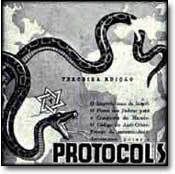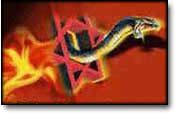There are moments when I find myself truly ashamed to be part of Israeli society. I had a moment like that recently as I stood outside the Supreme Court with women from Ahoti, a Sephardi feminist organization, waiting for a ruling on the religious girls' school in Emanuel where racism is so entrenched that parents will do all it takes to keep antiquated Jim Crow-like separations in place.
What is happening in the Beit Ya'acov school is nothing less than the formalization of racism. Here the school implements a policy in which Sephardi girls are not allowed to be in a class with Ashkenazi or hassidic girls, and they have different teachers, different classes and even different recess times and a fence between their yards just to ensure that the two groups do not mingle during the breaks.
It's not just Emanuel, but in other religious girls' schools around the country, such as Elad, where parents protested to ensure that a Sephardi girl would not be allowed in to the class. Protested! There have been reports from around the country of girls being rejected or ejected from schools because of the color of their skin or their last name. And even though the High Court ruled last week that the apartheid has to end, the school and parents are refusing to comply, thus rejecting civil as well as moral obligations. This is not the post-Civil War South, but Israel of 2008, where I would have expected more people to be outraged by this blatant racism.
"WHAT'S HAPPENING in the Beit Ya'acov is outrageous," said Yael Ben-Yefet, one of the leaders of Ahoti. "The girls get the message that they are deformed, that they are less good, that there is something inherently wrong with them. This happens everywhere in Israel, but it is the most prominent in this school."
This story comes on the heels of a similarly shocking exposure of racist practice in a religious school in Petah Tikva. Earlier this year, in a state religious school, the school physically and academically separated the Ethiopian girls from the rest of the school - separate teachers, separate curricula, separate rooms, separate recess.
My kids and I spent some time last year at a predominantly Ethiopian preschool in Mevaseret Zion, shortly after the Petah Tikva events came to light. One morning, as the kids all played together in the sand, the teacher said, "This community is very hurt. It just doesn't understand how such a deep-rooted hatred can exist in the country that its members dreamed of coming to."
The teacher suggested that as a form of healing, kids from around the country come and play with Ethiopian kids in preschool. It sounds so basic, and yet that basic sense of morality and equality is so profoundly lacking.
It's no coincidence that many these stories of racism take place in religious schools. Religious schools are drenched with practices that created social hierarchies between those who are "more" and those who are "less," or those who are "in" and those who are "out." Indeed, for my doctoral research on religious school culture, I discovered multiple hierarchies intersecting and intertwining in religious schools via a discourse that takes for granted Ashkenazi culture as morally, intellectually and religiously superior to Mizrahi or Sephardi culture.
The demeaning of Mizrahi kids is sometimes subtle, but often strikingly overt. Discrimination may take the form of teachers casually referring to "Ashkenazi intellect," and "Mizrahi emotion," or where the highest tracks become predominantly Ashkenazi and the lowest tracks predominantly Sephardi, based presumably on "intelligence." Mizrahi students are typically penalized and suspended more often than Ashkenazi students; they are reprimanded for the same offenses that Ashkenazi kids get away with, and are lectured on how to avoid things like dropping out, getting pregnant or turning on a light switch on Shabbat. Mizrahi students are assumed to be "problems," on the margins of society, teetering on the edge of an abyss or at high risk of being deemed the worst of all - non-religious.
Indeed, in religious schools, as opposed to state schools, discriminatory practices are rationalized on the basis of "religiousness." That is, whereas in non-religious schools, discrimination revolves primarily around academics and class, in religious schools, there is an entire extra level of patronizing in which Mizrahi kids are assumed to be less religious. Thus, for example, United Torah Judaism MK Avraham Ravitz, in an attempt to "explain" the events in Emanuel and Elad, said that "the ethnic discrimination stems first and foremost from the desire to maintain the school's educational atmosphere... We educate on internal and external values and there are differences among the different ethnic groups."
IN OTHER words, Sephardim have different "values" that threaten the "educational atmosphere." Mizrahi students are thus viewed as being on the margins educationally, economically and morally - and in religious schools, these hierarchies ultimately conflate into the view of Mizrahi students as less "religious."
This language of Sephardi culture as "threatening" to religiousness is rampant. Yair Sheleg, in his book Dati'im Hadashim (The New Religious), documents Ashkenazi fear of "contamination" by Mizrahi families. He writes that the 21st-century version of "white flight" is among Ashkenazi religious families. That is, as soon as parents see that Mizrahi students are entering "their" schools, they open up a new elitist "torani" school in the name of creating a "higher" religious level, but is in fact simply Mizrahi-free.
These religious hierarchies are the latest version of 19th-century colonialist racism of the "Great Chain of Being" and "Social Darwinism." Shlomo Deshen and Moshe Shokeid brilliantly write in Dor Hatemura (Generation in Transition) that Mizrahi and Ashkenazi religious identities take different forms - not superior and inferior, but simply different. Mizrahi religiousness is transmitted via people, families and traditions, while Ashkenazi religiousness is transmitted via the written word.
http://www.jpost.com/
Friday, 26 September 2008
Racism in the name of religion
Posted @
18:40
![]()
Post Title: Racism in the name of religion
Subscribe to:
Post Comments (Atom)
![[9_10_s22.jpg]](https://blogger.googleusercontent.com/img/b/R29vZ2xl/AVvXsEjTXnQay9wzz0E6nVHrVhaHKoq_zYXDqZjijHlNDQzj90MZzInrCuVX4ciFYCiBfZ7lhlgr2bBhhnl7ddWbhdih5JbXjQYbA605TNyiq046bQqjG2A4S-nHTmh1VBTQSG6tmc23wq47QQ/s1600/9_10_s22.jpg)




No comments:
Post a Comment